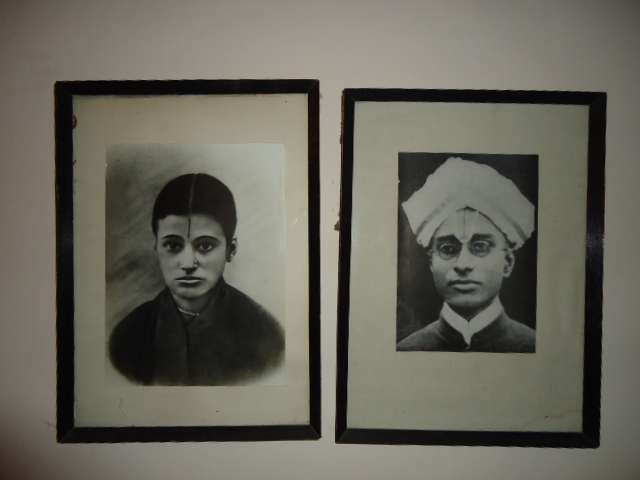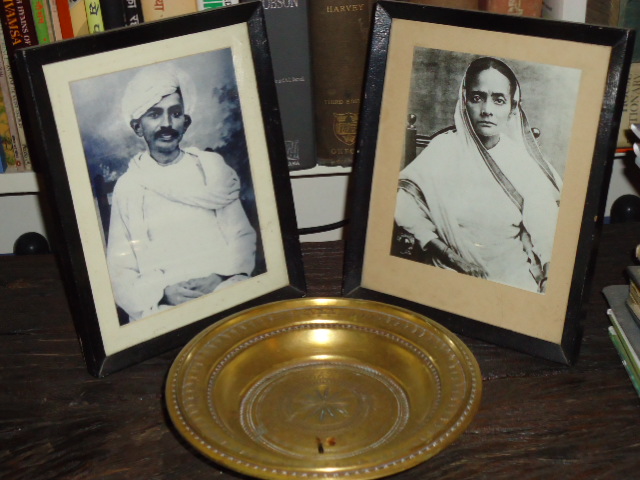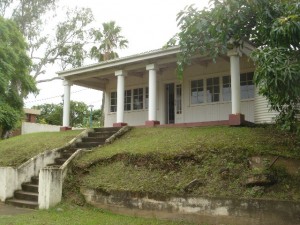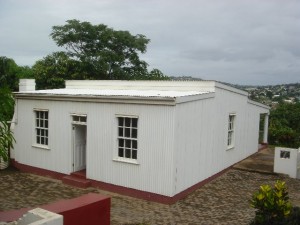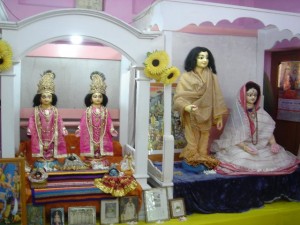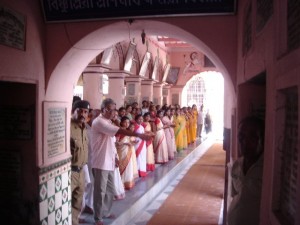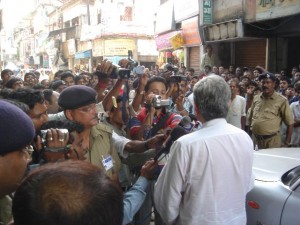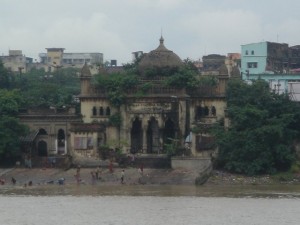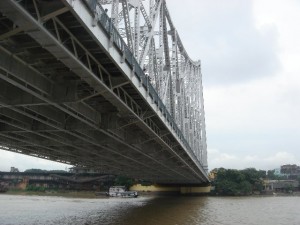Within minutes of arriving in Chennai, I set off to visit Gopalkrishna and Tara Gandhi, who live in a flat on the outskirts of the city, just off the main Pondicherry road. Here, as during their time in Kolkata’s palatial Raj Bhavan, they go to great lengths to be ecologically responsible. During Chennai’s frequent power cuts they run a couple of lights and fans with a solar inverter – something I had never heard of before.
Their modest flat is dotted with mementoes of Gopal’s illustrious grandparents.
On the maternal side: Alarmel Manga and Chakravarti Rajagopalachari (last Governor-General of India, founder of the Swatantra Party and opponent of nuclear weapons);
and the paternal:
Kasturba and Mohandas K. Gandhi (to whom Gopal always refers as ‘MKG’).
(‘MKG’s youngest son, Devadas- my father -,’ says Gopal, ‘married CR’s youngest daughter Lakshmi – my mother – after a celebrated courtship’).
The youthfulness of the Mahatma’s face in this picture reminded me of Durban, South Africa
and of some pictures I had seen
in the Gandhi ashram
in Phoenix (near Durban).
The next day Gopal spoke before the Chennai launch of ‘River of Smoke’.
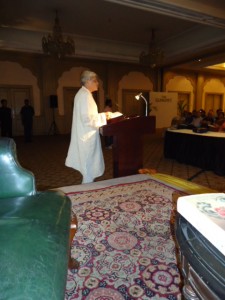 As always he found a way of immediately engaging the audience:
As always he found a way of immediately engaging the audience:
‘Book launches have four players – the author, the publisher, potential readers of the book in the shape of the audience, and finally the person slated to launch the book.
This last-named entity personifies that most essential thing at ceremonies, namely, the utterly dispensable. He is that part of the book launch’s architecture that threatens to turn it into a ruin.
He is just about tolerated by everyone present.
The author does so out of courtesy, the publisher out of custom, the audience out of compulsion.
And he is held in withering contempt by that other most essential entity, the gate-crashing free-snacker.
The launcher, of course, thinks he is the cock of the walk and proceeds to speak on the theme of the book in a manner that suggests he, not the author, oughtt to have written it. Or, he goes on to review the book, page by page, line by line, to show how he has mastered it , acquired control over it, actually tamed it like some horse-rider might, a difficult mare.
These exercises in self-deception are impossible when it comes to an Amitav Ghosh book…’
Listening to Gopal I was reminded of a time when my family and I had accompanied him on a trip to the ancient temple town of Nabadwip, in West Bengal.
He was then the Governor of West Bengal, and he was greeted with an outpouring of popular affection
the like of which I had never seen before.
On another occasion, when I was writing ‘Sea of Poppies’, we traveled
up the Hooghly River, along Kolkata’s beautiful but sadly neglected waterfront
past the Howrah Bridge
up to Barrackpore.

As Governor, Gopal took the intiative in restoring the historic government house in Barrackpore.

[Photograph by Samuel Bourne (1834-1912) taken in the 1860s**]
When I heard of this I could not resist sending him a fragment from a journal I had found in the Greenwich Maritime Museum in London.
(Journal of William Kershaw, Feb 1815).
Went to Barrackpore, rode over the park. Ostriches in all parts of the Park, 8 or 10 feet high –
– a very large lion
– a large Black Tiger
– 2 Royal Bengal Tigers, just caged, as savage as it is possible-
– several beautiful Leopards, one quite tame, the Keeper opened the door, but I shut it, thinking strangers might be disliked –
– a very fine aviary, well stocked
The Keeper brought out ‘under his arm’ an Orang Outang, a perfect satire on Human Nature, it is a female and in every respect resembles the sex. Its arms are long, but its features, are very expressive, nothing savage, I gently touched her with my whip, which she laid hold of. I then took her hand, and she hung her head on the Keeper’s arm, looking at me; it stands 2 ½ feet – hair on the back of umber colour – I think as well as I could understand, it was brought from the East of the Bay –
– several bears and wolves …
Gopal remains to this day a deeply beloved figure in West Bengal, revered for his integrity and venerated for his courage, especially his forthrightness in denouncing the violence in Nandigram and Singur. Living as he does, in contented retirement in Chennai, Gopal summarily dismisses all talk of a return to a public life – this is no loss for him perhaps, but it is a profound misfortune for India.
___________________________________
* from ‘Old Indian Photos’: http://www.oldindianphotos.in/2010/06/barrackpore-church-near-calcutta.html
** from Robert College Photography 5 History site: http://www.google.co.in/imgres?imgurl=http://ogimages.bl.uk/images/019/019PHO000000029U00048000%255BSVC2%255D.jpg&imgrefurl=http://robertcollegephotographysection5.blogspot.com/2009/01/picturesque-by-caner-bolukbas.html&usg=__fg39V5zryDFLBNLCYa5QS0SpOCY=&h=578&w=976&sz=230&hl=en&start=0&sig2=STSfMLJ0CvfClFMMAloZzw&zoom=1&tbnid=3nayqMaG_8dUnM:&tbnh=115&tbnw=194&ei=uIAeTqbbCJDjrAe1x_WDAg&prev=/search%3Fq%3Dbarrackpore%26hl%3Den%26client%3Dfirefox-a%26hs%3D1YF%26sa%3DX%26rls%3Dorg.mozilla:en-GB:official%26channel%3Dnp%26biw%3D1600%26bih%3D761%26tbm%3Disch%26prmd%3Divnsm&itbs=1&iact=hc&vpx=1104&vpy=302&dur=3303&hovh=173&hovw=292&tx=151&ty=114&page=1&ndsp=28&ved=1t:429,r:19,s:0

